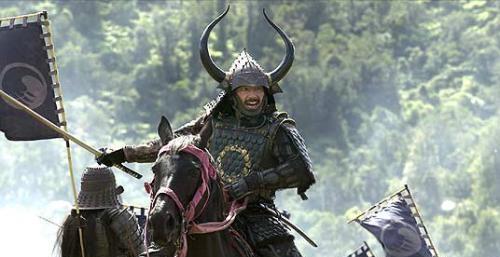Many friends know that during the Edo shogunate era, the life of the Japanese emperor was very hard.
In a word, no money. The economic lifeblood was in the hands of the Tokugawa shogunate, and it was not the emperor who rewarded the shogun, but the shogun who rewarded the emperor.
Let's take an example.
According to Japanese historical records, Emperor Meiji and his father, Emperor Takami, were able to eat a small fish at noon. He would also keep the fish bones, soak some water at night, and drink it as soup.
In 1854, after the Tokugawa shogunate signed a treaty of friendship with the United States, the great powers flocked to the country. Japan has arisen the movement of the Emperor to overthrow the curtain.
The arrival of the foreigners, while sweeping away the prestige of the shogunate, inadvertently increased the authority of the emperor.
From then on, the Tokugawa shogunate sought the court against the fallen elements.
Many daimyo broke the centuries-old ban on direct contact with the imperial court and pulled the emperor together to point out the country.

(Samurai Stills)
The radicals among them shouted for the emperor's honor, and as long as the emperor gave an order, they dared to cut down the shogunate and kill foreigners at the cost of their lives - but this was a prerequisite.
What premise?
That is, the Emperor wants to listen to me.
Oh, the emperor listens to you first and executes your ideas. So, your idea is the emperor's idea...
A bit of a detour, right?
Yes, anyway, before august of the old calendar in 1863, the radicals of the Choshu Domain and their allies in the imperial court, Sanjo Shimi, and others made Emperor Hyomyō a puppet.
On August 18, the Gongwu faction, which supported the marriage between the imperial court and the shogunate, locked the palace gates and issued an edict in the name of Emperor Hyomaki, expelling the Choshu clan from kyoto. Seven courtiers, including Sanjo Shimi, also ran to choshu domain, saying that they were going to raise troops to serve the king.
Yo, you have become an enemy of the Dynasty, and you still have to be a diligent king... The emperor doesn't want you anymore.
For nearly a year, Kyoto was relatively quiet, but two major events occurred that profoundly affected Japanese history.
One was that the Shogi faction assassinated famous scholars in the streets and supported the founding of the country, Sakuma Elephant Mountain. His prestige made many people feel that they should draw a line with those who were fooling around in Changzhou. The staunch Gongwu faction, Emperor Hyomi and the shogunate, intended to conquer Choshu.
The second was the shogunate's elite swordsman organization, a new selection group to discover the Choshu samurai and ronin, which would cause trouble in Kyoto and discuss it at the Ikedaya Inn. Therefore, the soldiers divided into several ways and killed Ikedaya. Several important samurai of the Yi sect were killed. Later, one of the three masters of the Meiji Restoration, Kido Takayoshi, who was also called Katsura Kogoro at the time, was late for the incident and escaped the disaster.
(Former Takayoshi Nakagido, rear right Hirobumi Ito)
In this way, the contradictions between Choshu and the shogunate and the imperial court were completely made public.
At that time, there were two factions in Choshu, one was radical, and they wanted to do a big job.
Genrui Kusaka, a student of Yoshida Shoin who was executed two years ago for plotting to assassinate shogunate laozhong, and others advocated caution.
In such a situation, where do the hot-blooded warriors still want to calm down? The radicals gained the upper hand, and Hisaka and others were forced to agree to raise troops.
They sent troops into Luo—Kyoto," which was nicknamed Luoyang—to attack places such as the Clam Gate.
This is August 20 of the New Calendar of 1864. This was the first time kyoto had been at war since the Osaka Summer Formation, which established Tokugawa Ieyasu's status as king. History is known as the change of the forbidden door.
The Choshu samurai who roared for the emperor shot at the imperial palace, and it seemed that whether the emperor would be shot or not seemed to be out of their minds. Perhaps, they really want to kill the emperor who cooperates with the shogunate.
Smoke and flames rose everywhere in the city, and only a few days later were extinguished, and more than 28,000 residential temples were destroyed.
However, Kyoto's guardian forces were not vegetarians, and although in some places, the Choshu samurai even attacked the gates of the imperial palace, but they were eventually defeated.
Hisaka and others committed suicide.
(Stills of the characters at the end of the scene)
The Choshu forces suffered heavy losses.
In "Emperor Meiji 1852-1912", it is written that more than thirty Zun factions held in hexagonal prison were executed, their bodies piled together, and their bodies were exposed for three days outside the imperial castle gate, which had not seen war for more than 250 years.
The shogunate and the Gongwu faction planned the first Choshu conquest.
Kyoto has temporarily lost its bloody rain.
But it was just the calm before the storm. However, five years later, Japan fell into disrepair, and the Tokugawa shogunate was completely thrown off the historical front.